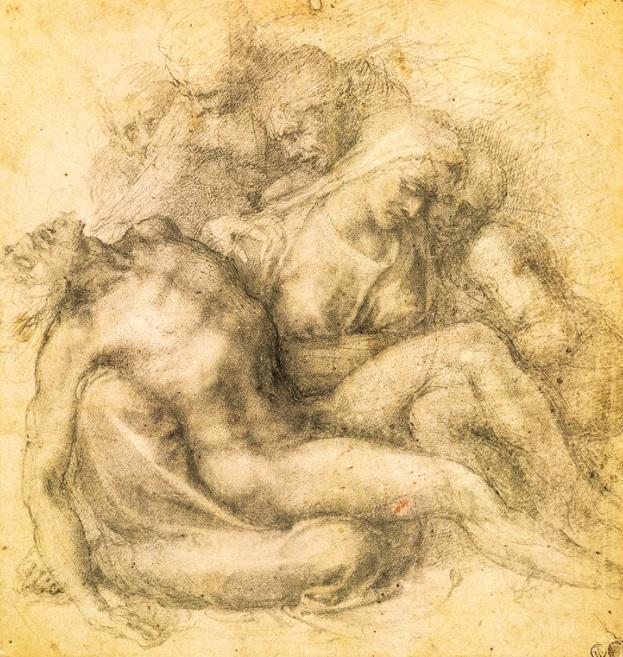Old masters of art blend with contemporary artists
Hatice Utkan Özden - ISTANBUL

The need to discover a new trend is undeniable for all actors in the art world. And when it comes to contemporary art, this need triples since the entire contemporary art world is always in search of something new. However, when searching for the new, the reality shifts and from time-to-time the art world turns to the most secure and trusted ones. This time old masters seem to fulfill this demand and the contemporary art world eyes the old masters. Thus, the trend is getting bigger each day, museums and institutions blending both old masters and contemporary artists’ artworks.
While some museums and institutions prefer to exhibit the old masters and contemporary artists in the same shows, some just showcase two different yet simultaneous shows. Recent exhibitions took place in London, such as Tate Britain’s William Blake exhibit along with Mark Leckey’s groundbreaking show, which might the best proof of this simultaneous contemporary and old master exhibit. Tate Britain showcased Leckey and Blake in different spaces in the museum inviting audiences to discover both an old British master and a young artist together.
Another successful yet a bit different example was London’s Royal Academy of Arts’ Michelangelo and Bill Viola exhibition which was a gathering of two different artists from different mediums. The exhibition may take the lead and stand as one of the best examples of combining an old master and a contemporary artist.
 In 2019, another example was from Oslo’s Munch Museet’s “Andy Warhol After Munch” exhibition. The museum gathered works from both artists and showcased Warhol’s series of 15 prints with images taken directly from
In 2019, another example was from Oslo’s Munch Museet’s “Andy Warhol After Munch” exhibition. The museum gathered works from both artists and showcased Warhol’s series of 15 prints with images taken directly from
Munch’s motifs.
All about numbers: Museum visitors
Recently, Louvre Museum’s Leonardo da Vinci exhibition attracted thousands of museum visitors to the venue, as the trend justifies this is one of the best ways to increase museum visitors. An old master’s show in a museum surely increases the visitor numbers, as shown in the Art Newspaper’s museum figures article. The 2018 museum figures, as presented in Art Newspaper’s article titled “Top Ten Old Masters,” revealed the Metropolitan Museum of Art’s exhibition “Michelangelo: Divine Draftsman and Designer” attracted 702,516 visitors. According to Art Newspaper: “An Italian artist leads the Old Masters category [and comes second in the overall rankings] for the first time in years thanks to the Met’s exhibition on Michelangelo [7,893 visitors a day].”
Another significant article from Artsy, written by Alina Cohen, stated gothic and medieval arts have entered the contemporary arts market and not only museums but gallery owners also into this old masters shows, as Cohen has quoted New York’s Chelsea art gallery Luhring Augustine’s owner: “Gallery co-founder Roland Augustine said he and his business partner, Lawrence Luhring, are excited about temporarily breaking from ‘the monolithic exercise of contemporary art shows, one after the other.’”
Old masters’ effect in Turkey
Turkey also has powerful examples of old master shows in 2019. Recently, Sabancı Museum has shown the works of an old Turkish master Hüseyin Avni Lifij (1886-1927), who occupies a significant place in the history of Turkish painting. Another bold example was from Salt Galata, showcasing portrait painter Mihri (1885-1954) who established herself as a prominent figure behind the social change of her time by advocating the foundation of the Academy of Fine Arts for Women in the Ottoman Empire
at the young age of 29.
Exhibitions have raised much attention especially among Istanbul’s art scene and attracted not only contemporary art lovers but classic and avant-garde art lovers to the institutions and museums.
The old masters’ effect is expected to raise the attention of the art scene in 2020 when professional and academic views are considered. In an interview with Hürriyet Daily News in 2019, Bilgi University academic Aylin Seçkin said that the old masters will be in fashion again in the coming years.
 The trend is not only about the figures of the visitor but about the art market’s reality in figures. Artsy’s Alina Cohen’s article quotes, “According to economist Clare McAndrew’s most recent report on the art market, in 2018, Old Masters accounted for just 6 percent of the value of the auction market for fine art and 8 percent of the total number of transactions, that year.”
The trend is not only about the figures of the visitor but about the art market’s reality in figures. Artsy’s Alina Cohen’s article quotes, “According to economist Clare McAndrew’s most recent report on the art market, in 2018, Old Masters accounted for just 6 percent of the value of the auction market for fine art and 8 percent of the total number of transactions, that year.”
















